|
Union Pacific Shaniko Branch |
|
|
|
The Columbia Southern Railway Company came into existence in March 1897 with plans to build a line from the UP mainline at Biggs Junction south into central Oregon. The first part of the line, from Biggs Junction to Moro, was completed by December 1898. The new town of Shaniko, 70 miles from Biggs Junction, was reached in May 1900. There were many plans to extend the line south towards the Prineville area, but rough country immediately south of Shaniko made further construction prohibitive. Union Pacific provided most of the financing to build the railroad through its Oregon Railway and Navigation Company subsidiary, and by 1906 the Columbia Southern was fully controlled by the parent company. Railroad headquarters were established in Shaniko, and the company built an extensive shop complex that employed 80 people at one time. Shaniko was the closest railhead to the vast expanses of central Oregon, and most of the trade to and from the region passed over the rails of the Columbia Southern. The busiest years of the railroad were 1910 and 1911, when UP relied on the railroad to transport a lot of men and material on their way to help build the Des Chutes Railway, which was battling with the Oregon Trunk Railroad for control of the Deschutes River canyon. The completion of the joint Oregon Trunk/Des Chutes line to Bend in 1911 diverted most of the through traffic off of the Columbia Southern, and the line entered a steep period of decline. Passenger service to Shaniko ended in 1936, and the line from Shaniko north to Kent was abandoned in 1943. The line was further cut back to Grass Valley, and all operations south of Biggs Junction ended in 1964/1965 when a flood in Hay Canyon destroyed a large portion of the remaining line. The ICC granted permission to abandon the last remnants of the Columbia Southern on 20 June 1967. |
|
|
Map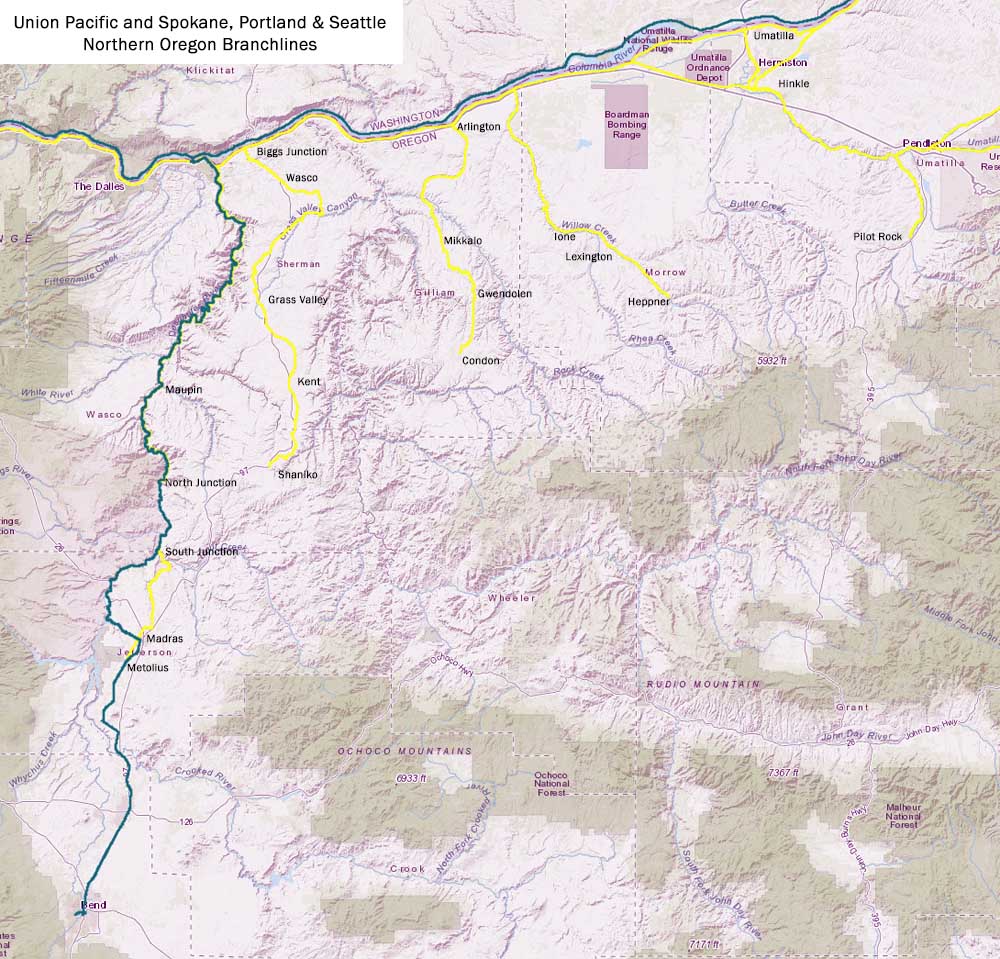 |
|
|
Photos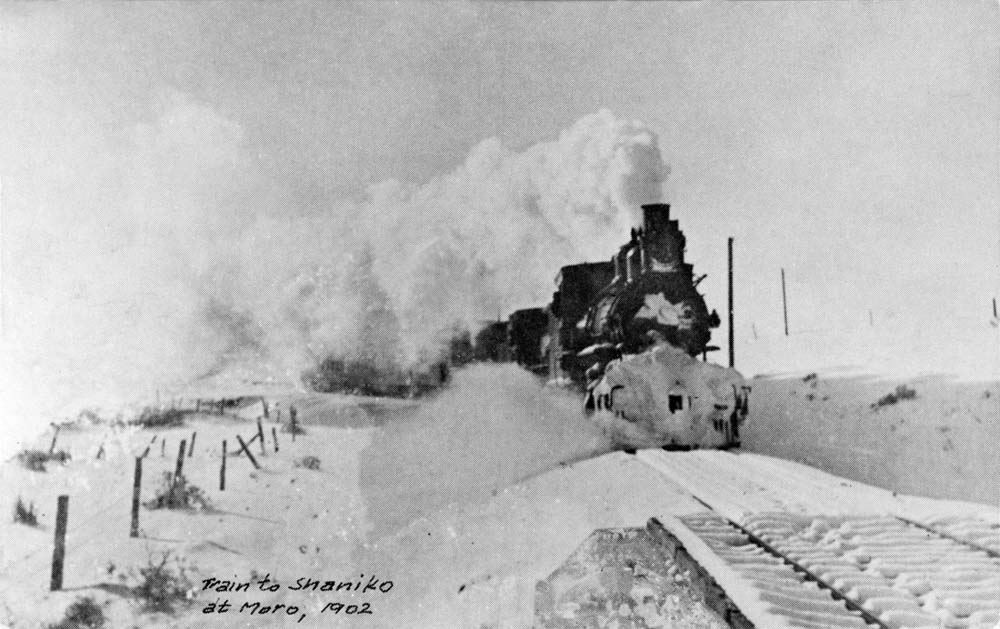 A freight bound for Shaniko in 1902. Jeff Moore collection. 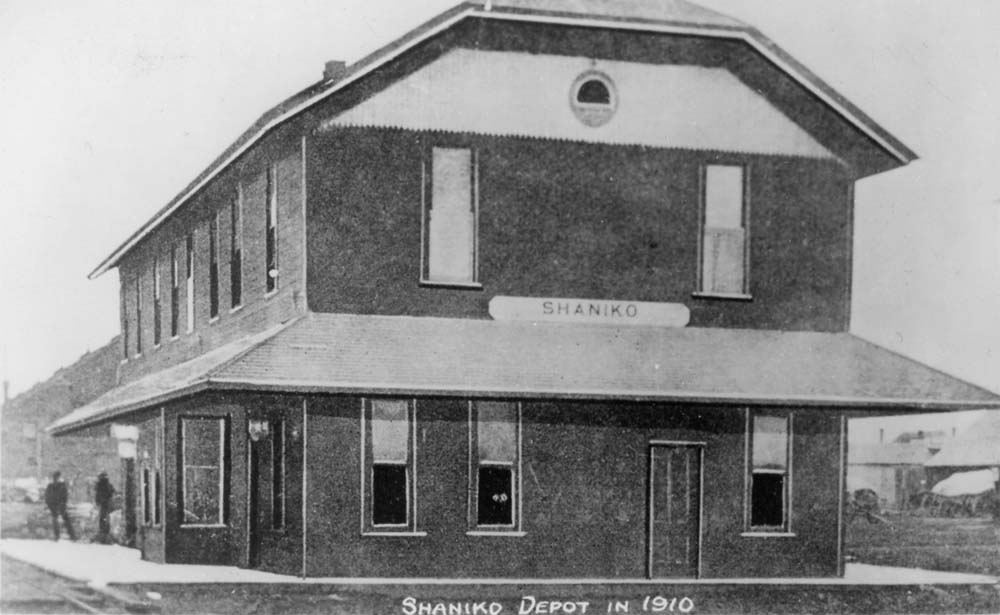 Shaniko Depot in 1910. 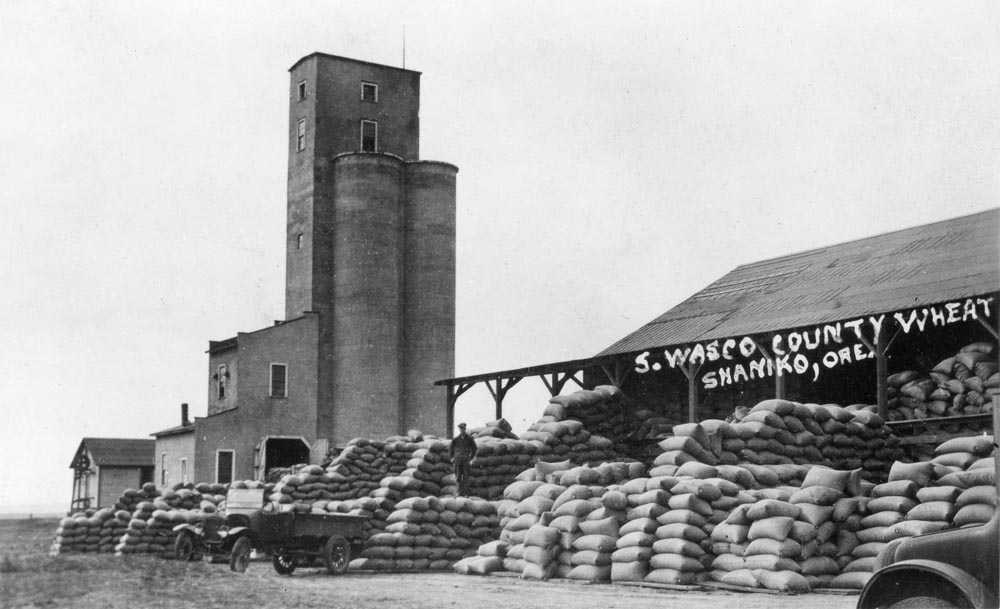 Bagged wheat in Shaniko awaiting shipment. Wheat was mostly shipped in bags until burlap shortages during World War I forced a transition to bulk shipments. 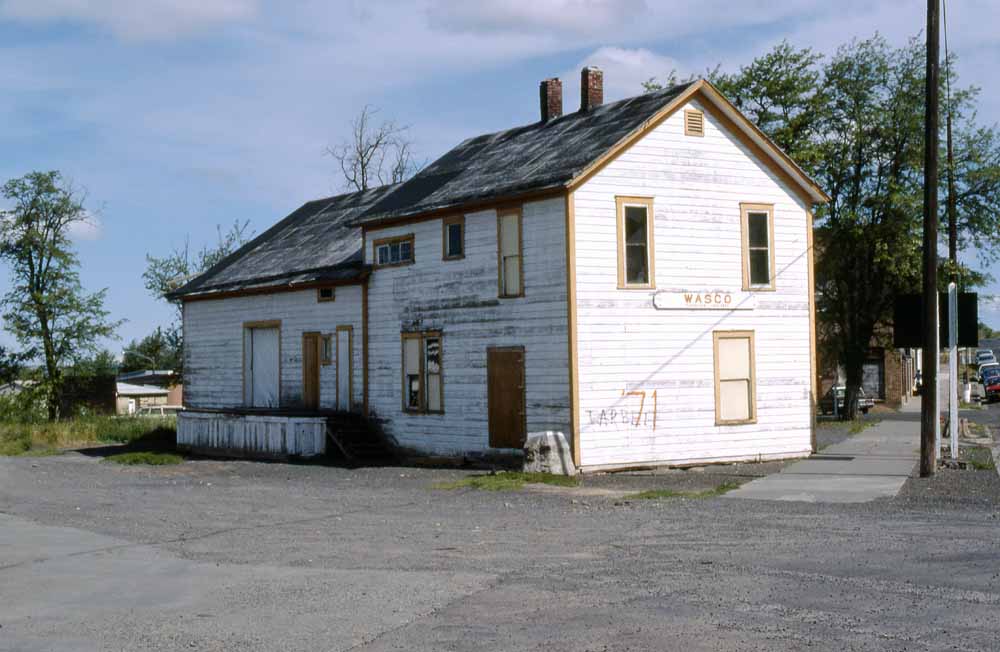 The Wasco Depot in the later 1970s. The building has since been fully restored. John Henderson photo, Jeff Moore collection.
The Wasco Depot in the later 1970s. The building has since been fully restored. John Henderson photo, Jeff Moore collection.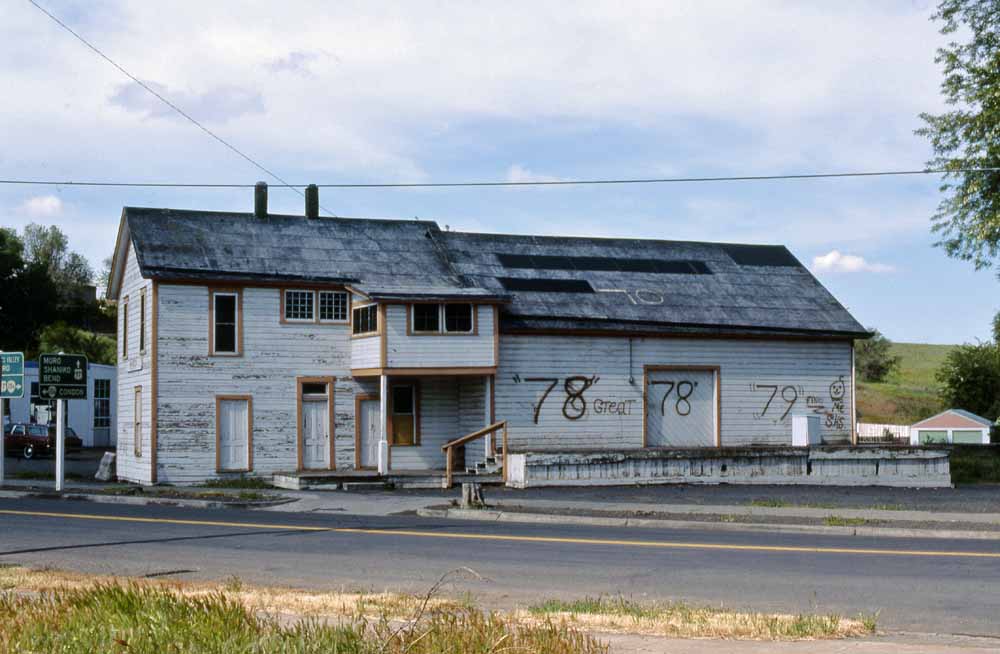 Another view of the Wasco Depot in the later 1970s. The building has since been fully restored. John Henderson photo, Jeff Moore collection.
Another view of the Wasco Depot in the later 1970s. The building has since been fully restored. John Henderson photo, Jeff Moore collection. |
|
|
|
|